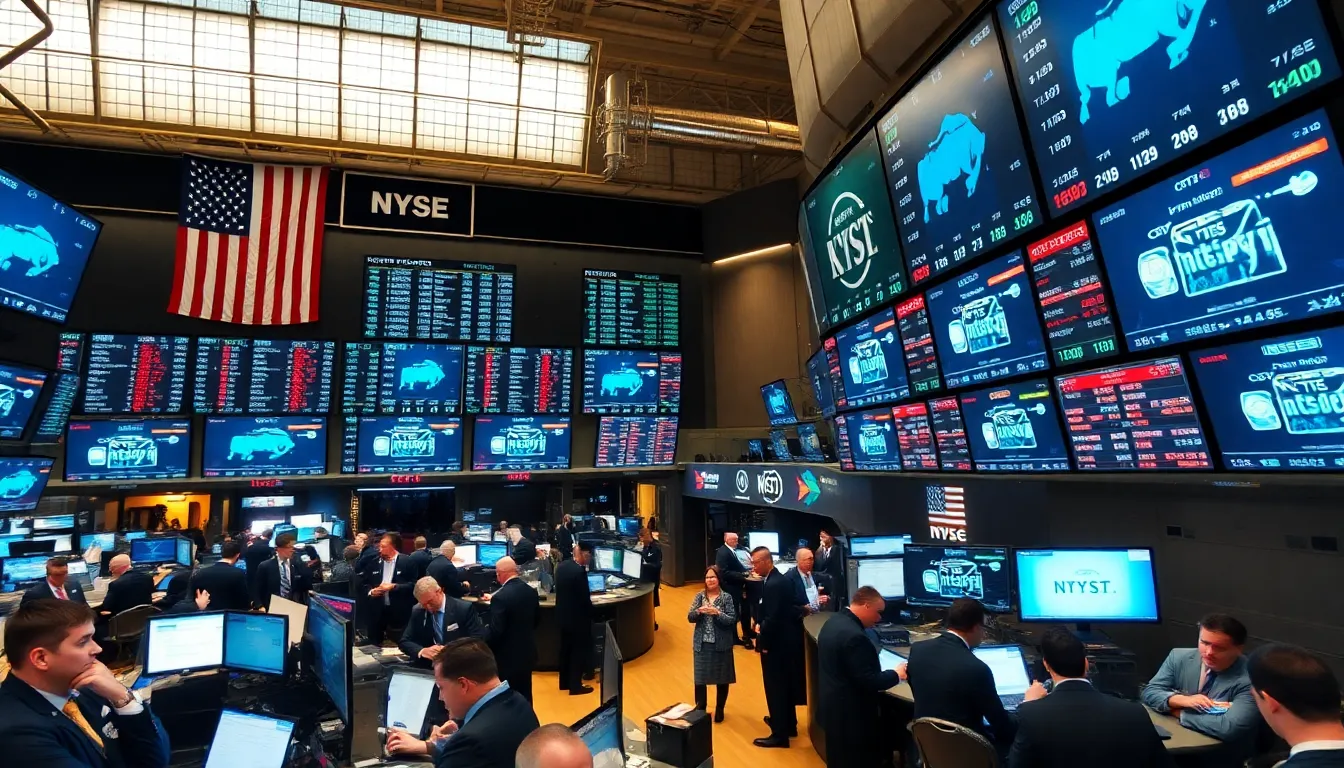Table of Contents
ToggleWhen a company decides to go public, the IPO pricing window becomes its stage, and the stakes couldn’t be higher. Imagine a high-stakes auction where investors are eagerly vying for a piece of the next big thing. Timing is everything, and getting the pricing just right can mean the difference between soaring success and a spectacular flop.
Understanding IPO Pricing Window
An IPO pricing window significantly influences a company’s market launch. It represents a critical timeframe during the initial public offering process, where the company’s shares are priced for trading.
What Is an IPO Pricing Window?
An IPO pricing window refers to the specific period when underwriters determine the initial offering price of a company’s stock. This window typically lasts from a few days to several weeks leading up to the IPO. During this time, underwriters analyze market conditions, investor demand, and comparable company valuations to establish a suitable price range. Establishing the right IPO price promotes successful sales and avoids potential backlash from investors.
Importance of IPO Pricing Window
The IPO pricing window holds immense importance for both the company and its investors. A well-timed and accurately priced IPO can maximize financial returns and enhance market perception. This window provides essential insights into investor sentiment, guiding companies on how to position themselves competitively. Pricing too high may result in unsold shares, while pricing too low can lead to lost revenue. Therefore, understanding and executing within the IPO pricing window can significantly affect a company’s future.
Factors Influencing IPO Pricing Window

The IPO pricing window hinges on various factors that can significantly impact a company’s market entry strategy.
Market Conditions
Market conditions play a crucial role in shaping the IPO pricing window. Investors often assess economic indicators like interest rates and inflation before committing funds to new offerings. High market volatility can create uncertainty, affecting demand for IPOs. Conversely, a bullish market tends to generate heightened investor interest, making it easier to achieve desirable pricing. Additionally, prevailing trends in the stock market can influence how investors perceive a company’s value. For example, positive performance from comparable companies may set a favorable baseline for pricing. These dynamics highlight the importance of real-time market analysis during the IPO pricing window.
Company Performance
Company performance directly affects the IPO pricing window as well. Metrics such as revenue growth, profitability, and customer retention provide insights into the firm’s financial health. Consistent performance can establish confidence among investors, encouraging a higher valuation. Strong quarterly earnings reports often elevate expectations, allowing underwriters to set a more favorable price. Conversely, recent underperformance may lead to cautious pricing and reduced investor enthusiasm. Industry comparisons further inform valuation, where strong performers in similar sectors can bolster a company’s perceived worth. Accurate assessments of company performance are essential for determining the right IPO price range.
Strategies for Setting the IPO Pricing Window
Setting the IPO pricing window requires careful strategy and analysis. Underwriters use various tactics to ensure optimal pricing that aligns with market dynamics and investor interest.
Green Shoe Option
A Green Shoe option allows underwriters to increase the shares offered in an IPO by 15%. This option serves as a safety net. If demand exceeds expectations, underwriters can fulfill that need without compromising initial pricing. Utilization of this option enables flexibility and enhances investor confidence, resulting in better price stabilization post-IPO. Many successful IPOs leverage this mechanism, leading to improved financial outcomes for the issuing company.
Book Building Process
The book building process forms a critical phase in IPO pricing. During this phase, underwriters gauge investor interest by collecting bids for shares. They establish a price range based on these bids, enabling them to set the final offering price. This method helps in assessing actual market demand as opposed to relying solely on historical data. Companies that engage in a thorough book building process typically enjoy more accurate pricing reflections of current market conditions, which increases chances of a successful IPO launch.
Challenges in IPO Pricing Window
Navigating the IPO pricing window presents several challenges that can affect a company’s success.
Volatility and Uncertain Markets
Volatility in financial markets creates unpredictability in investor behavior. Sudden market shifts may lead to fluctuating demand for IPO shares. Uncertainty surrounding economic indicators often exacerbates this issue. Companies could face challenges if broader market conditions signal caution among investors. Adverse conditions might necessitate a more conservative pricing approach, leading to missed opportunities for maximizing returns. Accurate forecasting in a volatile environment remains critical for achieving an optimal IPO price.
Investor Sentiment
Investor sentiment plays a decisive role in the IPO pricing window. Changes in public perception can significantly impact demand for shares. A positive sentiment often results in stronger investor interest, while negative news can dampen enthusiasm. Timing is essential; aligning the IPO with favorable news or events enhances investor perception. Understanding sentiment trends allows underwriters to better gauge pricing strategies. Misreading or ignoring investor sentiment risks setting an inappropriate price range, potentially jeopardizing the IPO’s success.
Navigating the IPO pricing window is a complex yet vital process for any company looking to go public. The interplay of market conditions and company performance shapes the pricing strategy that can determine success or failure. A well-executed pricing strategy not only maximizes financial returns but also enhances investor confidence.
Understanding the nuances of the pricing window allows companies to leverage market dynamics effectively. By anticipating investor sentiment and employing strategies like the Green Shoe option, firms can position themselves for a successful launch. Ultimately, mastering the IPO pricing window is essential for achieving long-term growth and stability in the public market.







